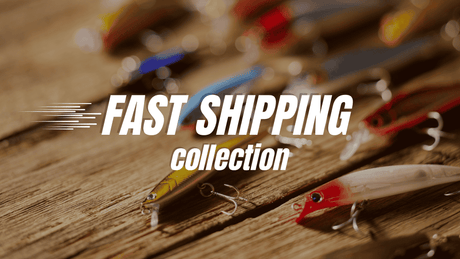Bass Fishing
Bass fishing is one of the most popular sports of fishing in freshwater areas such as lakes and rivers. The target of this fishing is a fish called bass, which presents a kind of challenge to the angler because they are powerful, agile, and yet very wary.
The appeal of bass fishing is manifold. First and foremost is its strategic and technical nature. Bass are sensitive to environmental and weather changes, and without the right lures and techniques, it is difficult to catch them, so anglers must constantly think of new strategies and continue to hone their skills.
Native Trout Fishing
Native Trout is a "Japanese-English" term that refers to fishing for native or wild trout in streams and rivers. In these locations, trout thrive in their natural environment and swim freely through streams and canyons to find a meal. Traditional techniques such as fly fishing and lure fishing are often used for trout fishing in natural environments. Anglers can pursue trout and hone their fishing skills in beautiful natural settings.
How to choose Native Trout fishing tackle:.
Rods: Lightweight, sensitive, and maneuverable in narrow streams and rivers are important. A lightweight fly rod, usually 6 to 8 feet, is the rod of choice.
Reels: Lightweight, sturdy fly reels are suitable. It is important that the line adjusts smoothly and supports sensitive casting.
Line: Thin, double-tapered fly lines are common. Select an appropriate line for casting delicate flies with precision.
Lures: Fly fishermen use flies that mimic the natural prey preferred by trout. It is important to choose flies that mimic the insects preferred by trout in each region.
Area Trout Fishing
Area Trout refers to trout fishing that takes place in artificially managed areas such as controlled fishing areas, fishing ponds, and ponds. In these areas, trout are usually released periodically and anglers pay a fee to fish. In managed fishing areas, trout are placed more regularly, creating an easier fishing environment. This makes them especially popular for beginners and families. Fishing tackle selection differs from fishing in a natural environment, but the basic elements such as rods, reels, lines, and lures are common.
Choosing Area Trout Fishing Gear:.
Rods and Reels: Rods and reels for area trout are different from those for general fly fishing. They are usually lighter, more sensitive, and more maneuverable in small ponds and pools.
Line: Lines for area trout are relatively thin and designed to improve casting accuracy and sensitivity. Select the appropriate type of line, such as fly line or spinning line.
Lures: Bait and lures that trout respond well to are used in controlled fishing areas. Select lures such as worms, power baits, and topwater plugs that are effective in managed fishing areas.
Inshore Fishing
Inshore fishing is fishing that takes place relatively close to land, such as along coastlines, estuaries, and shallow waters. The main target fish are sea bass, snook, and redfish. Inshore fishing is usually done from vessels such as small boats and kayaks, or from the shore, where it is relatively easily accessible.
Choosing Fishing Gear for Inshore Fishing:.
Rods and reels: Inshore fishing requires rods and reels that are lightweight, maneuverable, and sensitive. Lightweight is important.
Line: Monofilament and fluorocarbon lines are commonly used for inshore fishing. Line should be chosen for its strength and durability.
Lures: Artificial bait or lures are commonly used for inshore fishing. Select the appropriate lure, such as sinking lures or surface lures, depending on the species of fish you are targeting and the conditions.
Offshore Fishing
Offshore fishing is fishing that takes place in deep waters far from land. The primary target species are large saltwater fish such as tuna, mahi-mahi, and marlin. Offshore fishing requires larger vessels, charter boats, or specialized fishing boats, and requires more advanced techniques and equipment.
Choosing Fishing Gear for Offshore Fishing:.
Rods and reels: Strength and durability are important for offshore fishing. Offshore fishing requires strong, sturdy rods and reels for larger fish.
Line: Offshore fishing is best done with strong braid or fluorocarbon line. Choose a line that is strong enough to withstand the challenges of dealing with big fish.
Lure or Bait: Offshore fishing usually involves the use of live bait or large lures. Select the appropriate lure or bait based on the target fish's preference and conditions.

